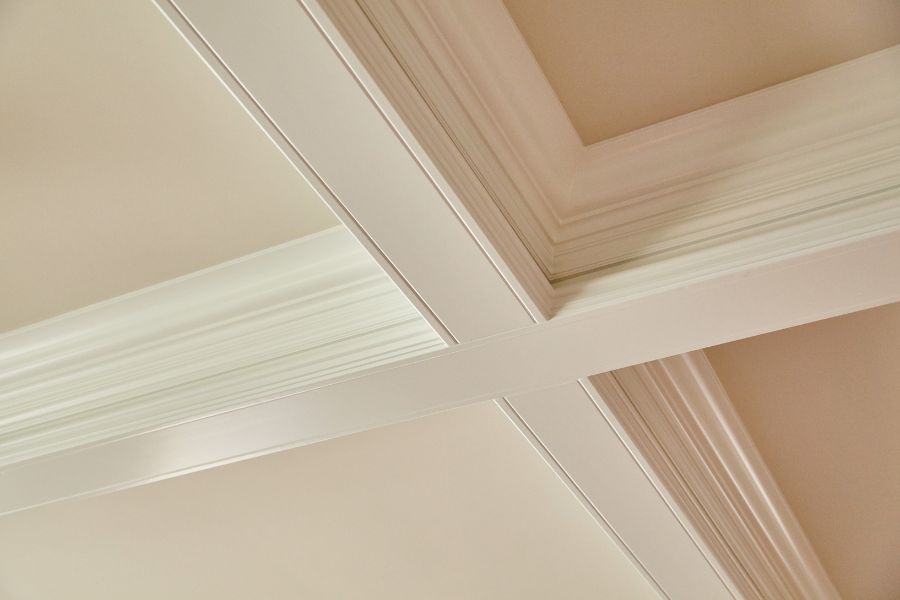How to Choose the Right Trim for High-Ceiling Rooms
High ceilings can make a room feel grand, spacious, and downright luxurious, but with that lofty height comes a unique design challenge: how do you complement such heights without leaving the space feeling stark or unfinished? That’s where trims and moldingsーthe secret weapons of home design, come into play. These ornamental elements add style and sophistication to a room while serving in functional ways, such as covering gaps and providing seamless transitions between surfaces.
Trims and mouldings can add something extra if you want to give your rooms with high ceilings a bit more zest. The question is, where can a person even begin with so many materials, styles, and designs available? Let’s dive in.
Crown Molding: Your Best Friend for High Ceilings
Crown molding is your secret weapon when it comes to a high ceiling. Situated where the walls meet the ceiling, it creates a framed visual that pulls the eye upwards, achieving a strong sense of height and grandeur.
Classic Crown Molding
Classic crown molding is known for its intricate detailing. It provides a somewhat formal and luxurious touch to a room. Larger, more decorative crown molding makes quite a statement in high-ceilinged rooms and looks beautiful with traditional interiors.
Modern Crown Molding
Lean and slick, modern crown molding is a thing. A bit more subdued, it is nevertheless visually powerful, adding structure to a room without disturbing the clean lines in a modern space.
Baseboards: The Foundation of Every Room
Baseboards are less showy than crown molding, but in a high-ceilinged room, they’re an important anchor. They create a clean, finished transition between the walls and the floor.
Taller Baseboards for High Ceilings
In rooms with a lot of wall space, taller baseboards—sometimes as high as 8 inches—can visually anchor the lower part of the room and balance it so that the walls do not feel overpowering.
Ornate vs. Simple Baseboards
Ornate baseboards with a lot of detail work well in traditional settings, whereas modern and minimalist rooms are best with a more streamlined, simple design. In either case, baseboards should match the general trim style to maintain consistency.

Choosing the Right Materials for Trims and Mouldings
Trims and moldings do require some thought put into the material you would want them made from. Here’s a glance at a couple of popular materials and their advantages:
Wood
Wood is traditional for trims and moldings; it is versatile, both with paint and stain options. It adds warmth and richness to a room through its natural look and feel, which may be ideal for creating an inviting and cozy atmosphere in a room. But it may not be suitable for very moisture-prone areas like bathrooms and kitchens because, after years of being there, it may warp.
MDF (Medium-Density Fiberboard)
MDF is an affordable and highly popular alternative to natural wood. Its smooth surface makes it perfect for painting, offering a high-quality finish without the heavy price tag. However, it is prone to water damage; therefore, it should be used only in areas where humidity is low or in rooms that have less moisture exposure.
How to Coordinate Trim Styles with Room Design
While high ceilings are naturally majestic, the trim style should match the overall design of the room; otherwise, it may feel utterly out of place.
Traditional Design
Rich, ornate trims and moldings work best for traditional or classic interiors. Think intricate crown molding paired with tall, detailed baseboardsーthings that give your average room an instant overtone of style and class. Clean, simple lines work better in more contemporary spaces, using trims and mouldings. That is where minimalist trims come into playーthose those that don’t hijack the architecture of the room. Sleek baseboards and streamlined crown molding help keep a space modern and unfussy.
Eclectic Design
For an eclectic space, anything goes, and mixing and matching styles is totally acceptable. You can easily combine traditional elements with contemporary touches and create something absolutely unique and personal. Wide contrasting trims can add an unexpected pop and make the room vibrant and full of character.

Painting and Finishing Touches
Once you have chosen the trims and moldings, the last step will be how to finish them. Your choice of paint or stain can really make a big difference in the overall look of the room.
Matching Colours
The colouring of trims and moldings similar to that of the wall makes them appear continuous. This is appropriate in a minimalist or modern room where subtlety must be considered regarding the trim.
Contrasting Colors
If you want to make a bold statement, then painting your trims and moldings in contrasting colors develops visual interest. Dark trims against light-colored walls, or vice versa, create a striking effect that draws attention to the architectural features of the room.
Ready to Elevate Your Space?
Choosing the right trim for high-ceiling rooms is the foundation for achieving a balanced and cohesive design. Here at Reno Liquidators, we carry a wide variety of the finest trims and moldings to fit any style and make your home renovation both beautiful and functional. From timeless elegance with crown molding to a sleek, modern look with minimalist trims, we have you covered.

